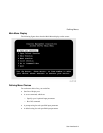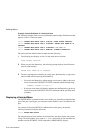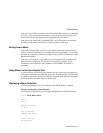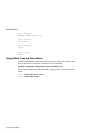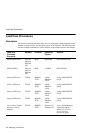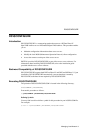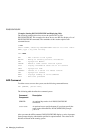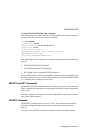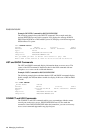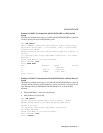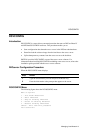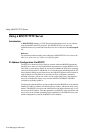
DSV$CONFIGURE
4-4 Managing Load Hosts
Example: Starting DSV$CONFIGURE and Displaying Help
The following example shows how to use the symbol DSV to start
DSV$CONFIGURE. This example also shows how to use HELP to display a list of
DSV$CONFIGURE commands. The remainder of this section explains each
command shown.
$ DSV
%DSV-I-IDENT, executing DSV$CONFIGURE version x.x.x-nnn -DSV-I-
HELP, type ? any time for help
DSV> HELP
ADD - Add a server to the system
MODIFY - Modify an existing server's information
SET - Synonym for MODIFY
DELETE - Remove a comm. server from the system
LIST - Display information about one or all servers
SHOW - Synonym for LIST
CONNECT - Connect to a server via remote console
USE - Synonym for connect
HELP - Displays summary of valid commands
EXIT - Exit this procedure
ADD Command
To add an access server to the system, use the following command format:
ADD [SERVER] [
server-name
]
The following table describes the command syntax:
After you enter the ADD command, DSV$CONFIGURE displays a series of prompts.
Some prompts display with defaults specified in square brackets. The values of the
defaults are based on the running system.
Command
Component
Description
SERVER An optional keyword as in all DSV$CONFIGURE
commands.
server-name
An optional way to specify the name. If you do not specify the
name on the command line, DSV$CONFIGURE prompts
you for it.




